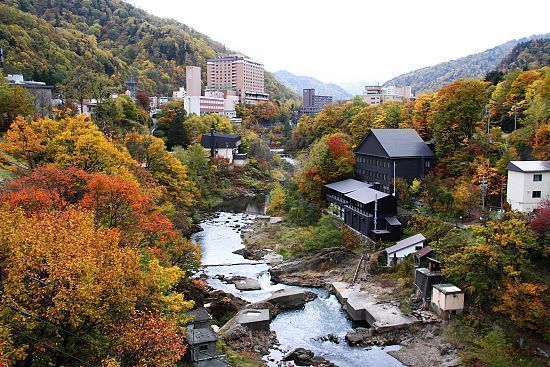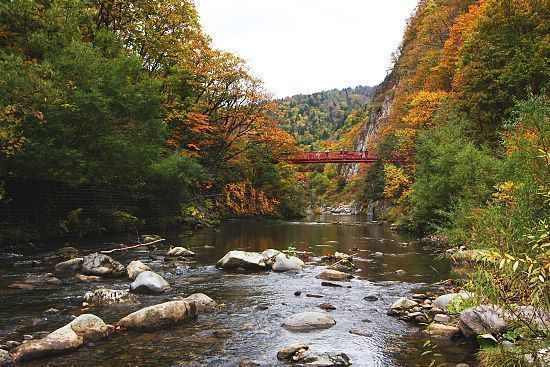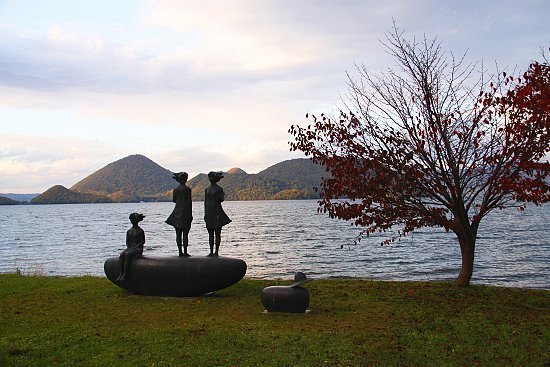

"Onsen" is a Japanese term, meaning "hot springs". They can be outdoor (露天風呂 or 野天風呂 rotenburo or notenburo) or indoor baths. Traditionally, onsen were located outdoors, although a large number of inns have now built indoor bathing facilities as well. Onsen by definition use naturally hot water from geothermally heated springs. Onsen should be differentiated from sentō, indoor public bath houses where the baths are filled with heated tap water.[1]
One of the etiquettes that is applicable at the onsen in Japan is that all guests are expected to wash their bodies and rinse themselves thoroughly before entering the hot water[1].
Bathing stations (may come in the form of cubicles or open style) are equipped with stools, faucets, wooden buckets, and toiletries such as soap and shampoo; nearly all onsen also provide removable shower heads for bathing convenience. Entering the onsen while still dirty or with traces of soap on the body is socially unacceptable[1].
At the Jōzankei Onsen, Horse Oil toiletries such as shampoo, conditioner and bathing lotion are provided. Heard that they are Hong Kong tourists favourite items and are their must-buy list when they visit Hokkaido.
Swimsuits are generally not accepted and towels are often not allowed in the water as it is considered as unclean. I was only allowed to put a small, moist, folded towel on the top of my head while I was in the water. Among the onsen I visited, Jōzankei Onsen did not allow guests with large obvious tattoos, but I saw many tattoo-ed ones when I stayed at one of the Lake Toya hotels. Scary? I guess that only happens at the men's side. (As far as I know, I did not see any mixed-sex onsen.)

Lake Toya. Photo from http://www.japan-guide.com/blog/koyo09/091014.html

Onsen water is believed to have healing powers derived from its mineral content[1] and the treatment of illness through bathing in onsen is called Balneotherapy / Onsen Therapy.
Due to the different chemical and mineral concentrations in different onsen, different onsen are said to treat different illnesses, the effectiveness of the treatment thus differs[1,2] (and the colour of the onsen water also variers: red, milky, green, blue, etc.)
When you visit different onsen in Japan, you can also find packets of Onsen bath salts available in stores. They make elegant souvenirs as well as a gift for yourself. If you have a bath tub at home, this is a great gift of memory. Onsen bath salts imported from Japan are also available in Hong Kong's department stores. You may also want to visit Onsenkagaku.com for related information.
You can find a list of famous Onsen in Japan here from Wikipedia as well as their photos here. Let me know if you have visited any of them and how do you feel about them by posting your comments!
Picture resources:
http://www.japan-guide.com/blog/koyo09/091014.html
Resources:
